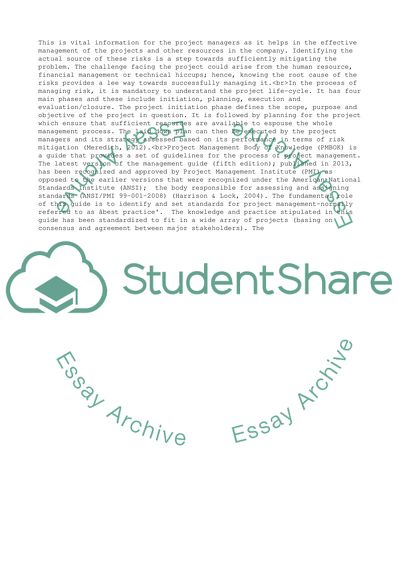Cite this document
(Discuss the risk management process and its interactions with the Essay - 2, n.d.)
Discuss the risk management process and its interactions with the Essay - 2. https://studentshare.org/management/1843037-discuss-the-risk-management-process-and-its-interactions-with-the-project-life-cycle
Discuss the risk management process and its interactions with the Essay - 2. https://studentshare.org/management/1843037-discuss-the-risk-management-process-and-its-interactions-with-the-project-life-cycle
(Discuss the Risk Management Process and Its Interactions With the Essay - 2)
Discuss the Risk Management Process and Its Interactions With the Essay - 2. https://studentshare.org/management/1843037-discuss-the-risk-management-process-and-its-interactions-with-the-project-life-cycle.
Discuss the Risk Management Process and Its Interactions With the Essay - 2. https://studentshare.org/management/1843037-discuss-the-risk-management-process-and-its-interactions-with-the-project-life-cycle.
“Discuss the Risk Management Process and Its Interactions With the Essay - 2”. https://studentshare.org/management/1843037-discuss-the-risk-management-process-and-its-interactions-with-the-project-life-cycle.


